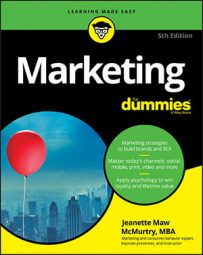- SEM involves tactics like paid search or pay‐per‐click advertising.
- SEO includes tactics on and off your web page. On‐page tactics include keyword placement throughout your site, blog posts, social sharing options within your content to get more shares, and so on. Things you do off your page may include forging links with other websites that support and complement your own site — for example, linking your site with a partner’s site so you get more hits from search engines. Social bookmarking, such as sites like Reddit and StumbleUpon, are great ways to get higher search rankings as your page comes up in many different places.
- Make sure you have a strong presence on the web and then manage that presence. Your web presence encompasses your sites or accounts that bear your name and drive people to your URL. Channels that help build your presence include YouTube, Facebook, LinkedIn, Flickr, your blog, and other accounts that help your name come up more often and higher in the search rankings.
- Provide a site map. The fewer links a search engine has to navigate to find content relevant to a specific search, the higher it’ll rate your site. A well‐designed site map cuts the search engine’s journey down to just two links. A large website needs a separate page for its site map, whereas simpler pages can place the map on a navigation bar that’s visible from every page. On your map page or navigation bar, list all pages by title or topic and provide a direct link to each one.
- Communicate directly with your customers to build traffic. Search engines look at traffic when ranking pages, so anything you do through direct communication with your customers to build traffic can help. Offer free informational or entertaining content people will want to visit and download. Consider making your website a resource for customers and noncustomers alike so as to maximize the amount of interaction with visitors. Free webinars and white papers can help boost your presence.
- Build links to related sites to improve your ranking. Put a tab or button on your home page that’s labeled Links, or if you want to pump up its appeal, label it The Best Links, Recommended Links, Our Pick of Links, or something like that. To find sites to link to, do your own searches and see what sites appear in the top ten listings. Then visit each of them and see whether you can find appropriate places and ways to link to them from your site (and vice versa, if possible). A company that distributes products for you or a professional association in your industry is a natural to link to your site. Build such links and the higher‐ranked sites tend to draw yours up toward them. But make sure you have useful content to justify those links! Very brief reviews of the linked‐to sites may increase the value of your links page and thus build usage and traffic.
- Build a family of sites and social networking site pages around your hub website. Doing so may capture traffic out on the rim of your web presence and direct it toward your hub. Include single‐purpose, single‐topic satellite pages and optimize the META tags for these pages so they rank higher than your main site in searches specific to their topics.
- Advertise steadily enough to amplify search engine traffic. Traffic increases rank on most search engines, so a promotion that drives traffic to your website gets amplified by follow‐on traffic that comes from search engine visibility, which in turn creates more visibility.
Adjusting SEM and SEM for sole proprietors or niche marketers
If you’re a sole proprietor, such as a business consultant, accountant, computer expert, or other professional, you don’t really need to invest in web technology for sites designed to attract masses of consumers. Although you still want to build traffic, your greater need is to focus on a smaller audience of people who likely need your services due to their proximity of location or direct needs for your service. In many cases, these people know you from another setting. In this case, keep giving them reasons to go to your site. Email them links to information, reports, coupons, news about your business, your speaking schedule if you do public speaking, and so on.To drive more people to your site so you can build your prospect base, use keywords effectively and bid on Google search terms that are highly specific to your area of business or niche.
As a niche marketer on the web, you may also find it more effective to emphasize your own expertise as the spokesperson for your brand. Blog in your own name and post a short video seminar or how‐to demonstration on YouTube.In addition, look for ways to build visibility in professional online venues, perhaps by offering content to newsletters and signing up to be listed with professional associations and then linking those sites to your hub website. The more you build your voice in the industry as a thought leader or expert in a specific skill area, the more you can build your site’s traffic and the more attractive you become to others whom you may want to link your site to for mutual credibility and traffic building.

